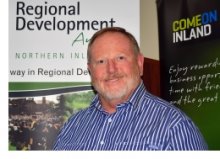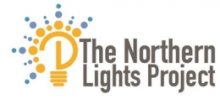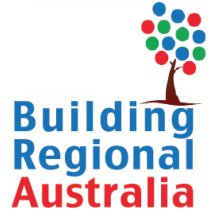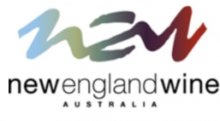-
Featured Items
-
Featured Resources
 Funding & Grants
Don't miss out on funding opportunities. Stay informed with our up to date online listings and email notifications.
Read More
Funding & Grants
Don't miss out on funding opportunities. Stay informed with our up to date online listings and email notifications.
Read More
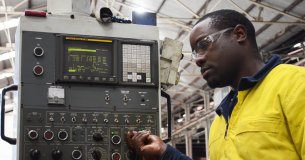 Skilled Migration
Our services help both applicants and employers, to learn more, develop plans, submit applications, and settle in.
Read More
Skilled Migration
Our services help both applicants and employers, to learn more, develop plans, submit applications, and settle in.
Read More
 Research and Analysis
Good research and analysis makes the case. How can our resources and services help your project or application?
Read More
Research and Analysis
Good research and analysis makes the case. How can our resources and services help your project or application?
Read More
 Information & Data Resources
With resources like REMPLAN, Regional Knowledge Base, and decades of data, discover how we can help your project.
Read More
Information & Data Resources
With resources like REMPLAN, Regional Knowledge Base, and decades of data, discover how we can help your project.
Read More
-
Stay InformedSubscribe to one or more of our regular email subscriptions, to be kept up to date on news and funding opportunities for the region
-
-
Our Region
- Our Region
- Regional Plan
- Regional Data
- Current Regional Issues
- Population Migration Analysis for 2016-21
- Job Vacancies Continue at All-Time High
- National Debt - What it Means for Our Economy?
- The True Value of Home Solar
- The Economic Impacts of Local Government Amalgamations
- State of the Regions Report 2014-15
- Antifragility - A different take on regional economic development
- Biohubs - Collaborative Waste Management
- Attracting New Residents
- Socio-Economic Impacts of the Murray Darling Basin Plan
- Murray Darling Basin Water Recovery
- Growing Businesses
- The Northern Inland Economy
- Geographical Overview
- Major Industry Sections
- Our Services
- Grants and Funding
-
Skilled Migration
- Skilled Migration
- Skilled Employer Sponsored Regional Visa
- Skilled Work Regional Visa (subclass 491)
- Temporary Seasonal Workers
- Designated Area Migration Agreement (DAMA)
- Helpful Information for Visa Holders
- Information for Employers
- Case Studies
- Payment Details
- Advice & Further Information
- Contact Details
- News & Events
-
Our Projects
- Our Projects
- Current Projects
- Skilled Migration
- Wool Works - Wool Training Schools
- Metal Works - Welding and Fabrication Schools
- Come On Inland
- Stories of Resilience
- Alt Brothers Beekeeping - Glen Innes
- Carelle's Toy Store - Glen Innes
- Greenhill Orchards - Arding
- Gwydir Meats - Warialda
- Kaputar Motors - Narrabri
- Moonbi General Store - Moonbi
- Sandstock - Tingha
- Sherelle Fashions - Tenterfield
- Sleepy Merino - Inverell
- Tenterfield Chamber of Toursim, Industry and Business - Tenterfeild
- The Welders Dog - Armidale
- Walcha Veterinary Supplies - Walcha
- AGCAP - Agribusiness Careers & Professions
- Northern Inland Regional Investment Profile
- Past Projects
- Digital Economy Strategy
- Business Growth Project
- Go Digital
- How to Start an Online Business
- Create Your Website Using Squarespace
- How to Edit Your Squarespace Site - Part 1
- How to Edit Your Squarespace Site Part 2
- Add a Shop to Your Squarespace Site
- Start a Blog and Find out What Customers are Searching
- 14 Tips For a Better Blog Post
- Which Social Media Platforms are Best for Your Business
- How to Use Facebook Effectively For Your Business – Part 1
- How to Use Facebook Effectively For Your Business – Part 2
- Instagram Tips for Business
- Catching Up, More Instagram & Dealing with Haters
- Getting Started with Twitter for Business
- Social Media Scheduling Tools
- How to Start an Etsy Shop – Part 1 – Research
- How to Start an Etsy Shop – Part 2 – Signup
- Online Security for Your Business
- Product Photography and Website Images: Your Guide
- 5 Tips to Improve your Productivity in your Business
- Best Online Business Resources
- How to Improve Your Communication Skills and Win More Clients
- NBN Coordinator
- Putting Power Back in the Regions
- Road Freight Study
- Town Audit Benchmarks
- Food and Wine
- Youth Survey
- Digital TV Switchover Assistance
- Northern Inland Transport Guide
- Live.Train.Work
- Northern Inland Innovation Awards
- Northern Inland Innovation Awards - 2017
- Northern Inland Innovation Awards - 2016
- Northern Inland Innovation Awards - 2015
- Northern Inland Innovation Awards - 2014
- Northern Inland Innovation Awards - 2013
- Northern Inland Innovation Awards - 2012
- Norther Inland Innovation Awards - 2011
- Prime Super Northern Inland Innovation Awards - 2010
- Prime Super Northern Inland Innovation Awards - 2009
- Northern Inland Innovation Awards - 2007
- Northern Lights Project
- NBN Smart Home
- Murray Darling Basin
- Moree Plains Business Workshops
- Namoi Investment Prospectus
- Industrial Land
- Bioenergy and Local Electricity Retailing
- Northern Inland Business Energy Assessment
- Skills for the Future
- Impacts of COVID-19 on Businesses
- Past Projects of NIRDB
- Aboriginal Employment and Enterprise in the Gunnedah Region
- Art as an Industry
- Aviation Survey
- Farm Forestry - Northern Inland Forestry Investment Group
- New England North West Film Strategy
- Northern Inland Excellence in Business Awards
- Food and Wine 2003 - 2008
- Prime Super Northern Inland Innovation Awards 2009
- Regional Business Networking Program
- Regional Leadership Course 2008
- Viticulture Strategy 2002-2003
- About Us
- Contact Us
- Other Resources
- Privacy and Legal
- Search
Back to Newsletters
June 2015 Newsletter
Tuesday 30th of June 2015
In this Issue:
- Welcome from the Chair
- We Have Moved!
- Looking at the Facts in the Emotive Council Amalgamation Debate
- Northern Lights Website Launched
- Living Classroom’s Farm Dam Make-Over
- Building Regional Australia Summit
- New England Wine Industry Gets Social with the Vino Geek
- Narrabri an Investment Hot Spot
- Grants and Funding Opportunities
- What's On in the Northern Inland
Welcome from the Chair
Well, it’s certainly been another busy month in the Northern Inland region and it was great to see some good rainfalls across most parts of the region as winter sets in. As our Local Councils are occupied with ‘Fit for the Future’, we thought it would be an opportune time to publish a paper on the economic impact of Local Government services and you can read more about this below. As major employers and spenders in our region, it would be a shame if there were any reductions in these community contributions due to amalgamations.
The bush has suffered from decades of government withdrawals, particularly from a State and Federal perspective, so let’s keep our strong Local Government presence here. I hope the amalgamation focus is justly pointed towards the greater Sydney area where any possible adverse economic and community impacts will be relatively minimal.
Although our amalgamations paper was focused on Local Government, the impacts on regional communities, as a result of the loss of any government-supported jobs are identical. Of course, any job loss in rural Australia, including the private sector, can hit a small regional community hard. The results of the loss of quality jobs are far more immediately evident in the small to medium sized towns, as the effects are instant and savage. We saw this with the takeover of locally developed and operated County Councils in the 1990s, or more recently the forestry job cuts in the Walcha Shire. However, this long-term downward employment trend in small to medium country towns will inevitably flow on to our larger regional cities and towns. It is no secret, to those of us born and bred in the bush, that much of our cities’ income is directly connected to the smaller surrounding towns and communities.
If this unsustainable situation is not redressed, what then for our local cities? It is absolutely essential for all that we continue to build and support our regional cities. However to achieve this, we must urgently work towards building healthy and vibrant, smaller rural towns and communities, as an essential foundation.
Regards,
Russell Stewart, Chair
We Have Moved!
We have recently moved our office and we can now be found at 143 Marsh Street, Armidale, just a few blocks away from our previous location in Rusden Street. Our phone number and postal address have not changed.
Looking at the Facts in the Emotive Council Amalgamation Debate
There has been a long-running debate about the financial sustainability of all Australian Local Governments and the role they play in our three-tiered structure of Federalism. Currently, the issue is being played out in NSW via the ‘Fit for the Future’ process, which is asking all NSW LGAs to prove their financial sustainability and consider means of becoming ‘financially fit for the future’.
Amalgamating Councils is one of the options being discussed to improve financial sustainability. Amalgamations are contentious and there has been considerable research and commentary on the issue for more than a decade.
Regional Development Australia Northern Inland has produced a brief paper which runs through some of the arguments for and against council amalgamations. It identifies some of the economic contributions in terms of employment, wages, capital expenditure and potential flow-on (or multiplier) effects to the rest of their local economies.
The paper can be accessed here.
Northern Lights Website Launched
The Northern Lights Project now has a dedicated website at www.northernlightsproject.com.au
Administered by Regional Development Australia Northern Inland (RDANI), the project is a collaboration between RDANI and seven of the councils in our region – Armidale Dumaresq, Glen Innes Severn, Guyra, Gwydir, Inverell, Tenterfield and Walcha – which will see 5,000 old, energy inefficient street lights upgraded to the latest LED technology. The project also employs an Energy Efficiency Education Officer, with Peter Stanley traveling the region with custom-built educational displays to assist households and businesses to cut their energy costs.
RDANI Senior Project Officer, David Thompson is encouraging people of Northern Inland NSW to make the most of this new energy efficiency resource.
“As part of the communication aspect of this Australian Government funded project, the website contains information about the street light upgrades to LEDs, energy saving tips for households and businesses, and an innovative calculator which shows the annual energy costs of typical household appliances,” said Mr Thompson. “New material will be added to the site as it is developed, including more videos with household energy saving tips.”
Living Classroom’s Farm Dam Make-Over
The Living Classroom (TLC) at Bingara is about to see a new project that will excite many Gwydir Shire residents and reach out to rural people across Australia. The Aussie Farm Dam Make-over is a concept that has been developed by two students from the Queensland University of Technology (QUT).
Debbie Turner and Emily Colling produced the Aussie Dam Make-over as their third year project in Landscape Architecture. Under the guidance of John Mongard, who has provided most of the initial plans for TLC, the students researched and designed the concept to be applied to the feature dam at TLC. The feature dam that Mongard has termed “The Great Lake” is a 6 megalitre, water storage at the end of a 2km water capture bank and swale system.
The Great Lake was designed and shaped at the start of TLC project to provide a site ready for a number of varied applications.
Turner and Colling’s research showed that the traditional Australian farm dam usually fails to deliver. They saw that the objective of reliable and clean water for stock was often defeated by high evaporation, high infiltration and stock pollution of the water. This makes the typical farm dam unreliable and counterproductive.
Although water is captured, its quality and utility are poor, and this failure begins well before the onset of drought.
The student’s response was to suggest the Aussie Farm Dam Make-over. Key elements in their design were to suggest that farm dams be; deeper, with less surface area to volume; crenelated, with a greatly increased ‘edge factor’; ecologically enhanced with strategic plantings of vegetation both within the dam, along its edges and adjoining it; and the introduction of other features to both enhance the dam’s aesthetics and increase its economic and environmental potential.
The design work of the students greatly impressed their tutors and several Bingara community members, so much so that it was proposed that grant funds be sought to take the project ‘off the page’, from a plan to a reality.
Frances Young from Northern Slopes Landcare (NSLC), Glen Pereira from Gwydir Shire Council (GSC) and Rick Hutton and Garry McDouall, both from Bingara and District VISION 20/20 (V2020), met to discuss this prospect. An application was put to North West Local Land Services (NWLLS) for funding to advance the project. The application was successful and more than $50,000 has been allocated to the project from NWLLS, with supplementary funding from GSC, QUT and V2020. Community engagement and volunteerism are now important aspects of the project.
This is an exciting project. It is possibly unique in Australia, and has implications for rural people across the globe. Recent announcements from the Federal Budget for tax deductions when spending on water infrastructure, and the suggestion from the Bureau of Meteorology that at an El Nino event may trigger the onset of another drought in Eastern Australia this year, makes the Aussie Farm Dam Makeover, even more timely.
Building Regional Australia Summit
On the 14th, 15th and 16th of July, decision makers from throughout Australia will gather in Dubbo, the geographical centre of NSW, to examine the major issues facing country Australia and to create a platform to draw attention to non-metropolitan country, coastal and regional Australia - the engine room of our nation.
The theme for the 2015 Building Regional Australia Summit is ‘Building Regional Australia through Infrastructure Partnerships’, and is designed to bring together communities, businesses and Members of Parliament, who will provide information on how to access and enhance the infrastructure in each local government area. Regional development issues are also on the program.
“It is a great opportunity for communities and businesses alike to create ties to build working relationships into the future,” CEO Peter Bailey says. “By coming together in a centrally located country city, the people involved in growing our great nation can crowd-source ideas from each other, show innovative new practices and implement what they learn.”
The summit is proudly presented by Regional Development Australia - Orana, Foundation for Regional Development Ltd and QuantasLink.
Further information and restration can be found on the website, www.buildingregionalaustralia.org.au
New England Wine Industry Gets Social with the Vino Geek
Self-confessed wine nerd and blogger Sam Watson (aka TheVinoGeek) has signed up with the New England Wine Industry Association (NEWIA) in a deal set to boost the social media and online presence of the region’s fine wine and produce industry, Minister for Regional Development and Small Business John Barilaro announced in early June.
The Vino Geek will provide a year of intensive social marketing to the industry across Facebook, Twitter and Instagram.
“The Vino Geek business has grown into a strong position to offer a broader range of services to local wineries, from social media set-up and management, marketing, event management and more,” Mr Barilaro said.
“The new deal will help local wineries and producers lift their profile and promote the region’s premium cool climate wines to the rest of Australia and beyond.”
Narrabri an Investment Hot Spot
Narrabri has dispelled the myth that major cities in Australia are the best options for proptery investors. The town experienced zero population growth over the last 10 years yet its property market performed significantly better than the Melbourne local government authority (LGA) of Wyndham, which had the fifth highest population growth in Australia.
Propertyology has recently concluded a comprehensive study of the historical property market performance of each of Australia’s 550 local government authorities (LGAs) since the turn of the century.
Someone who purchased a typical three-bedroom house in Narrabri in 2000 would have paid $96,250. That property would have subsequently grown in value by an average of 8.1 per cent per annum over the last 15 years and today would be worth $287,500.
When adding the current rental yield of 6.9 per cent, the total return of Narrabri is a handsome 15 per cent. The latest data from ABS shows that Narrabri’s 2014 population of 13,764 was 20 people fewer than 10 years earlier. Yet, in spite of the completely stagnant population, Narrabri is officially ranked the 51st best performer out of all LGAs in Australia (top 10 per cent in the country).
Narrabri’s performance is no fluke. There are in fact nine locations in the Top 100 (Australia’s best 20 per cent) that have experienced zero (or even negative) population growth over the last decade.
Sixty nine of Australia’s Top 100 property markets over the last 15 years have a population of LESS than 100,000 people. Eleven of Australia’s Top 20 property markets (and 42 of the Top 100) had a population growth rate LESS than the Australian average and have a population of less than 25,000 people
Average annual population for the City of Hobart over the last decade of 0.4 per cent was well below the capital city average of 1.8 per cent. In contrast, Hobart’s average annual price growth of 9.2 per cent is superior to the capital city average of 8.5 per cent.
Population volume and population growth are still important considerations for selecting a sustainable location to invest in; an increase in population means higher demand for housing.
However, if supply is equally matched through broad acre land release and / or higher density, then price growth will be constrained. LGAs such as Melton, Victoria (6.3 per cent), Boddington, WA (6.2 per cent), Melbourne City (5.5 per cent), Whittlesea, Vic (4.2 per cent), Adelaide City (3.8 per cent) and Canada Bay, NSW (3.0 per cent) all have very high population growth rates yet their total property returns relative to the national average are underwhelming.
Population growth is not the only driver. Affordability is a significantly bigger driver of property price growth than increasing population.
Population is one of more than 30 factors that astute property investors will consider when selecting a location to invest in. It’s the sum of all these factors that’s important.
This data comes from Simon Pressley, managing director of Propertyology, an REIA Hall of fame Inductee, property market analyst, accredited property investment adviser and buyers’ agent.
Grants and Funding Opportunities
Innovation Funding Boost for Local Rural Councils
Northern Inland Councils are encouraged to apply for the $4 million Fit for the Future Innovation Fund for rural councils.
The fund is designed to support rural and regional councils in providing services and infrastructure for communities with a population of less than 10,000 people.
It is part of a $1 billion funding package for local government in NSW.
“The initiative provides one-off grants of up to $150,000 for individual councils and up to $400,000 for projects involving more than one council,” said Member for Northern Tablelands, Adam Marshall. “Small rural and regional communities face unique challenges in sustaining their communities and maintaining local services. The Innovation Fund will help address some of these challenges.”
The Innovation Fund assessment criteria include:
- Clear community benefits from the project;
- The use of new and more efficient processes, technology and ways of working;
- Value for money;
- Positive impact on Council’s future performance against the Fit for the Future criteria; and
- Risk management identified
Google Ad Grants
Applications are ongoing
Google Ad Grants is the nonprofit edition of AdWords, Google's online advertising tool. Google Ad Grants empowers nonprofit organisations, through $10,000 per month in in-kind AdWords™ advertising, to promote their missions and initiatives on Google search result pages.
Regional Industries Investment Fund
Applications are ongoing
The Regional Industries Investment Fund (RIIF) plays a key role in the NSW Government's commitment to driving economic growth in regional New South Wales and enhancing the attractiveness of regional areas.
What’s On in the Northern Inland
Hats Off to Country
Thursday July 2nd to Sunday 5th July
Tamworth
Songwriter’s Retreat Showcase
Sunday 5th July
Nundle
Mungindi Races
Saturday 11th July
Mungundi
The Australian Wool Fashion Awards
Friday 17th July
Tamworth
Masonic Masquerade Ball
Saturday 18th July
Narrabri
Tamworth Boarding Schools Expo
Friday 24th and Saturday 25th July
Tamworth
Related Pages







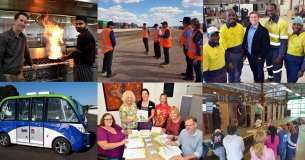 Latest News
Latest News
